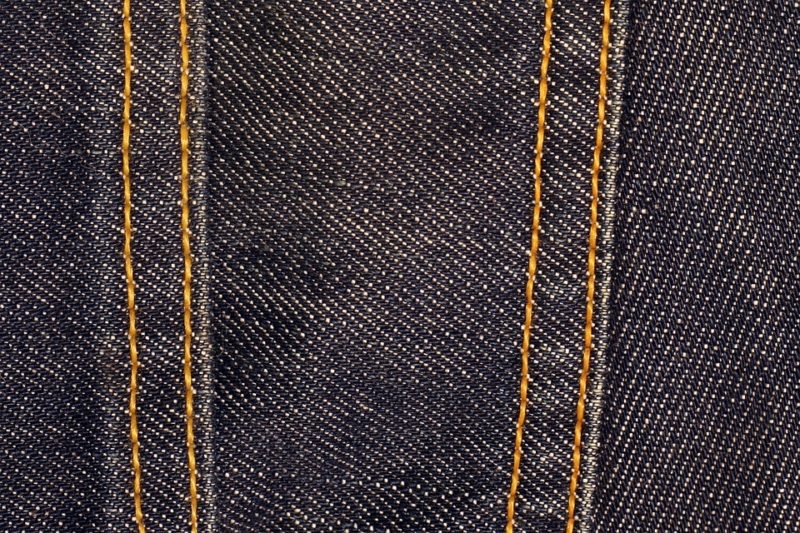If you want to learn how to double stitch sewing, it’s only two steps. We will also discuss what this sewing technique is and its uses. And, of course, you will know the difference between double stitching and single stitching.
Since we’re on the topic of double stitching, why not read how to use a double needle on a sewing machine as well? You will benefit from learning that practice, especially for hems and various decorative purposes.

How Do You Do A Double Stitch?
Step 1. Make the first seam
- Pin the seam of the fabric right sides together
- Set the sewing machine to a straight stitch with your preferred length and tension
- Test the stitch settings on a piece of scrap fabric and adjust accordingly
- Work the first stitching line on where you would typically put it
- Follow the markings on the machine’s plate to ensure accurate placement of the stitches
- Remember to backstitch at the beginning of the stitching line to secure the stitches
- Backstitch at the end of the stitching line as well
Step 2. Make the second seam
- Sew the second stitching line at ⅛ inch away from the one you made previously
- Backstitch the beginning of the row to keep the stitches from unraveling
- Backstitch at the end of the stitching line as well
- Trim the raw edge and press the seam to the side to finish or leave the edge be if your material is delicate
What Is A Double Stitched Seam In Sewing?
A double-stitched seam is the same as the plain seam, but you’re working on another stitching line between the first line and the raw edge of the fabric. This way, the seam will be more durable, ideal for materials prone to fraying or garments that will benefit from the extra hold of the double-stitched seam. However, do not confuse the double-stitched seam with the double top-stitched seam.
What is a double top-stitched seam?
The double top-stitched seam is the same as the top-stitched seam and not the plain seam like the double-stitched seam. So you can think of it as a top-stitched seam made twice to stabilize the seams and make them stronger to withstand wear. The seam allowance bulk will also be smoother since it’s distributed evenly, which is why the double top-stitched seam is often used in projects like blankets.
When to use a double stitch seam
- The two stitching rows from the double-stitch seam is ideal for projects that need to be durable and prevent fraying without showing too much seam, such as in dresses
- The double-stitched seam is a fantastic way to sew the seams on delicate fabrics like chiffon without causing a bulky seam and getting them worn down from too much sewing
- The second stitching line in a double-stitched seam stabilizes the seam, perfect for stretch fabrics if you don’t have a serger
Do you know that you can serge with a sewing machine? If you don’t have a serger but want the same seam finish it makes, read how to serge with a sewing machine.
How Do You Sew A Double Stitched Seam By Hand?
- Mark the seam line on both sides of the fabric and pin the right sides together
- Select the appropriate thread and needle for the fabric
- Thread the needle and wax the thread
- Backstitch at the beginning of the stitching line
- Work the first row of stitches along the seam line, then make the second line about ⅛ inch away from the previous one
- Trim the excess fabric from the seam allowance
- Press the seam to finish
Alternatives To Double Stitching
Use a twin needle
You can replicate a double-stitched seam by using a twin needle on your sewing machine. Just check if your sewing machine is compatible with the twin needle and set them up correctly. Furthermore, mark the stitching line on the seam to get a perfect line and let the twin needle do the work.
Use a serger
There are different ways to serge the seams, depending on how you want the seams to look. It’s also a quick way to finish your fabric edges when working on a large volume of sewing projects because the machine also trims the edges and sew them for you. So if sewing is your business, it might be better to invest in a serger or overlocker.
Double Stitching Vs Single Stitching
It’s self-explanatory to distinguish a seam with double stitching from a seam with single stitching. Of course, the one with a second stitching line will be the double-stitched one, making it more durable than that with a single stitching line. Nonetheless, both are made with the regular straight stitch, and they don’t differ in the techniques when working the stitches.
Conclusion
Was this article helpful? We just discussed how to double stitch sewing and found out it’s basically doing the plain stitch seam twice. The second stitching line will be around ⅛ inch away from the first one.
We encourage you to practice your sewing machine settings on a scrap fabric beforehand. This way, you’ll get the perfect seam finish with double stitching. But more than a professional-looking seam, a double stitch seam is also ideal for strengthening your fabric edge and keeping it from fraying.
